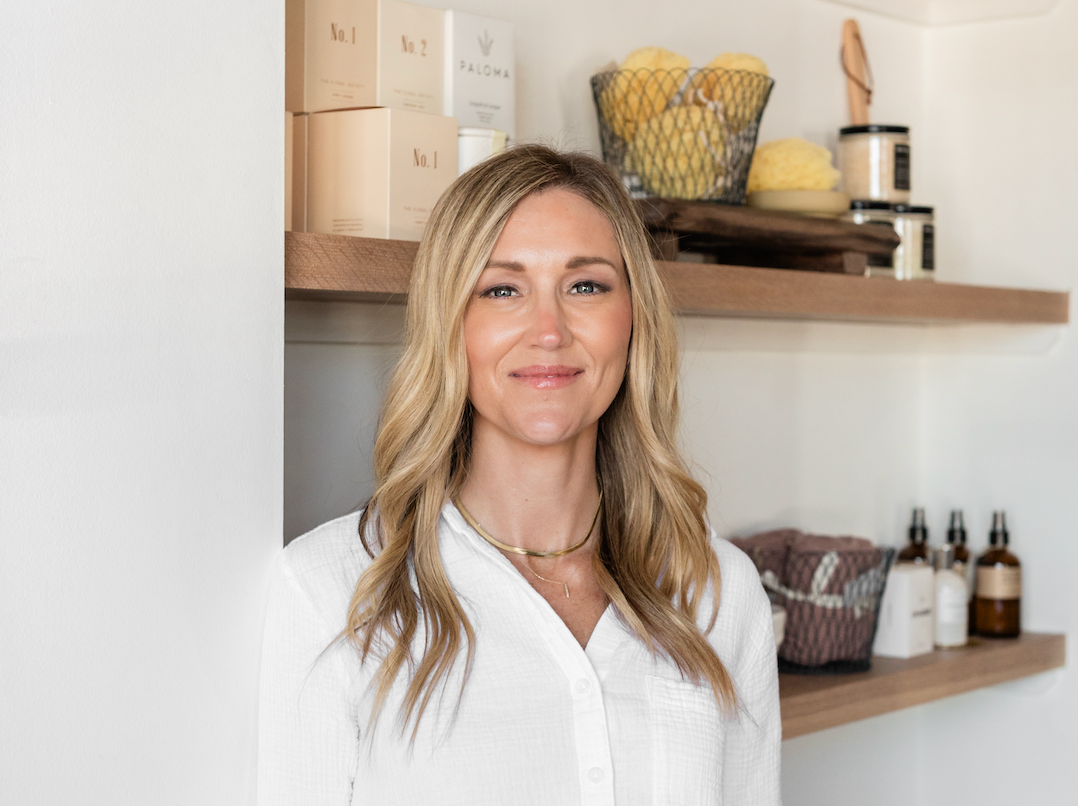Growth looks different for every designer. For some it means staffing up; for others it’s opening a presence in a new city. And for Kate Marker, it was a bit of both—plus a blueprint for an entirely new kind of design business.
Full-service design formed the bedrock of Kate Marker Interiors, which she launched in Chicago in 2007 after earning a degree from Harrington College of Design and spending a few years learning the ropes freelancing at another firm. In the years to follow, she built up her clientele and added a few new team members. Then in 2016, a new era began with the purchase of a quirky cottage in Michigan.
“I was in love with the idea of something I could do myself, that I wasn’t doing necessarily for clients, where I felt more free to do something unique,” Marker tells host Kaitlin Petersen on the latest episode of Trade Tales.
The designer’s creativity ran wild in the three-bedroom getaway on the shores of Lake Michigan, which came to life with green checkered kitchen floors and a coral pink refrigerator. The space became the first in a new arm of her business: a series of vacation rentals, where guests could get a taste of the designer’s style without diving all in on her services (not yet, at least).
In 2019, she expanded on that concept by adding a third category into the mix: an e-commerce site called Kate Marker Home. The retail project began as a way for the designer to share her collection of vintage rugs with Instagram followers who coveted the unique pieces showcased in her projects, and soon became another entry point for would-be clients, as well as a sourcing resource for her rentals.
“The three parts of my business really complement each other. Kate Marker Home allows me to extend my design experience beyond residential projects—my everyday, full-scope projects—while vacation rental properties serve as tangible examples of my work,” she says. “Guests can potentially become interested in my design services or products after experiencing [another] part of my brand.”
Elsewhere in the episode, the designer shares what it takes to build an e-commerce brand and how she found clarity with her fee structure, and reveals the go-to questions she uses to determine a client’s budget expectations.
Crucial insight: Early in her career, Marker noticed that clients would immediately clam up when it came time to talk about budgets. Over time, she discovered that two questions would reliably help them open up—and make her job much easier. “I say to them, ‘When’s the last time you bought a sofa? And if you’re looking to work with me and you’re going to buy a sofa, what would you spend?’” says Marker. “It’s a very simple thing, but it can effectively describe to me the [general product] quality and the features I should look for when I’m helping them.”
Key quote: “When trust happens, beautiful things happen. Building that trust in the beginning really carries us throughout a successful project. If that feels broken even when they first hire us—if they feel like we’re too busy, or they’re not as important as somebody else—that is the opposite of what we’re going for. … We always figure out early on the emotions they want to feel in their space, and their budget, and that helps establish a connection rather than, ‘OK, let’s just fill out a questionnaire.’”
This episode was sponsored by Room & Board. Listen to the show below. If you like what you hear, subscribe on Apple Podcasts or Spotify.





























